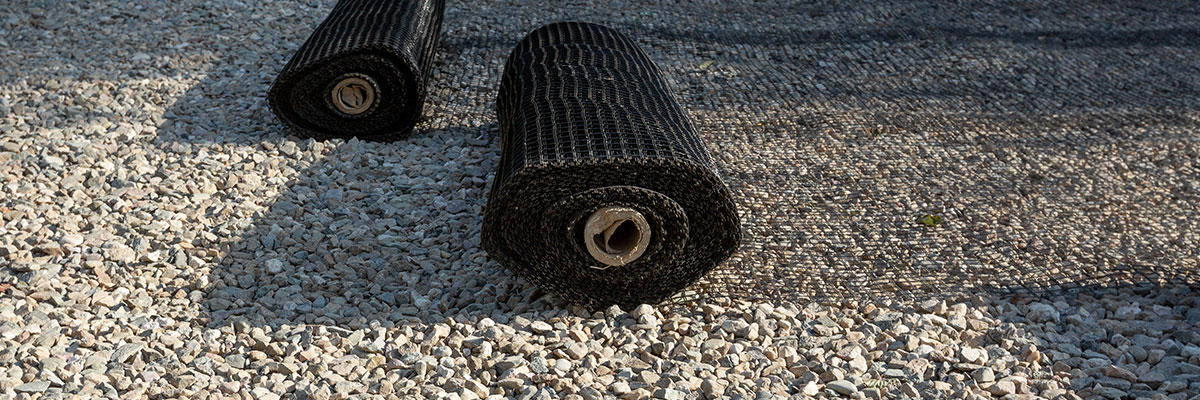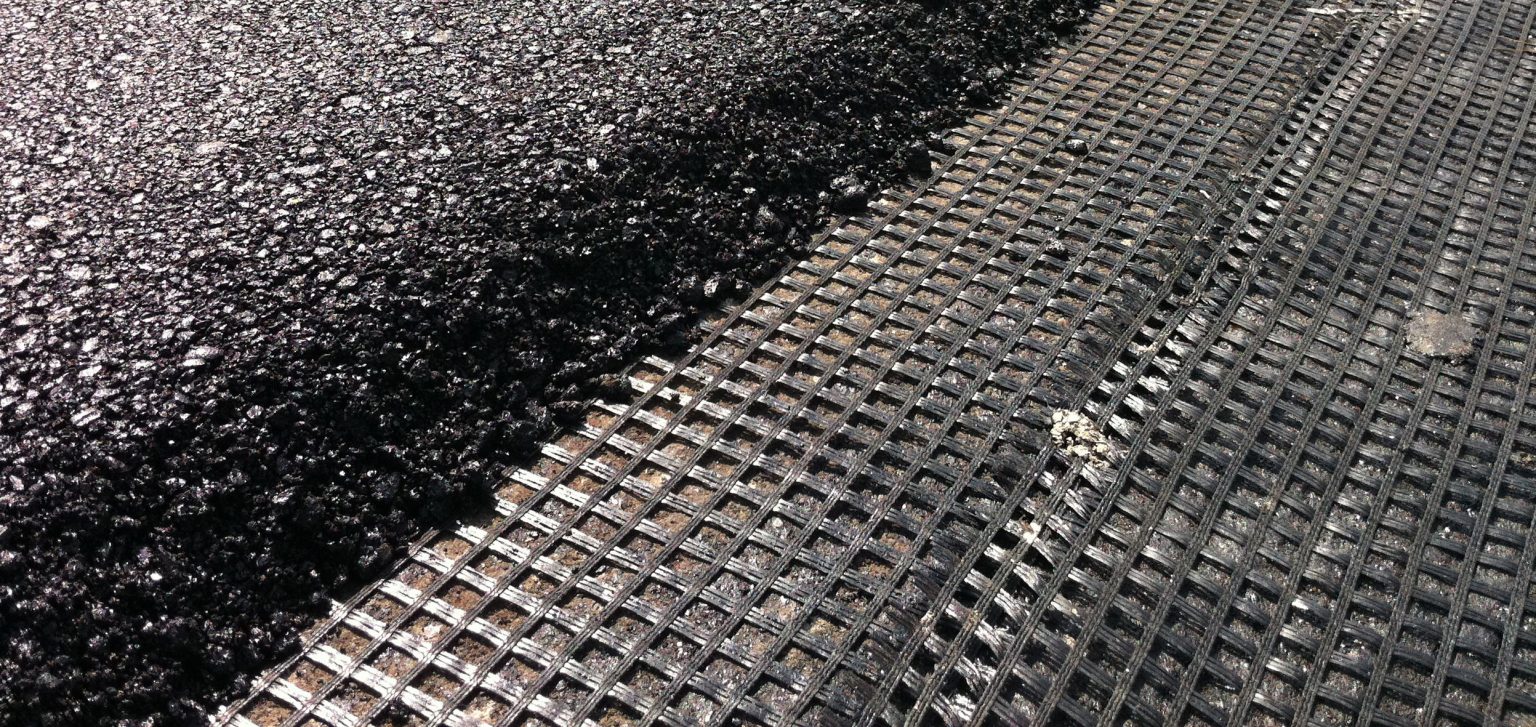Geogrid, also known as geogrid mesh or stabilisation mesh, is a type of geosynthetic material used to provide stabilisation and reinforcement to soils and similar materials. Made from polymer plastics, typically polypropylene, polyethylene, or polyester, geogrids consist of a series of interlocking vertical and horizontal ribs that create apertures (open spaces) in a grid pattern. Often this will be a pattern of square holes, making the geogrid look like a rigid plastic netting, but patterns of rectangles or triangles are also common, depending on the make and the intended application - more on this later.

Geogrids are, basically, designed to prevent the movement of soil and other granular materials, be it beneath a pavement to reduce the impact of dynamic loads or behind a retaining wall to reduce the pressure against it. They achieve this through the use of their apertures, which allow the material placed on top of them to strike through the geogrid and create interlocking pockets between the high tensile ribs. This essentially creates a composite material that holds together better and distributes weight more evenly than either material can alone, helping to prevent concentrated loads from causing structural failure or contributing to the erosion of the base material and subgrade.
If you imagine holding a clump of soil in one hand and then pressing down on it with the other, what would happen? The soil clump would lose its shape, either becoming flatter and more spread out, or it would crumble and fall away, depending on its consistency. Now, imagine putting the same clump of soil into a square plastic mould; what would happen then? The pressure of your hand would compact the soil, but the mould would stop it from spreading or crumbling beyond its confines. Thus the soil in the mould scenario would move significantly less than the non-confined soil and create a much more stable base material. In its simplest form, this is what geogrid does but on a larger scale.
Compared to other geotextile products, geogrids can feel quite stiff. This is because the polymer material is effectively stretched out to create a high tensile strength in one or both rib directions, commonly known as the machine (or longitudinal) and transverse (or cross) directions. This, along with the strength of the joints, or nodes, where the ribs intersect, is key to the success of any geogrid. The material that fills up each aperture bears against the ribs that contain it, transmitting the load along the connected ribs via the junctions and distributing the load over a wider area. This only works if the ribs and the junctions are strong enough to withstand the tension.
Keep reading for a more technical description of the forces at play in a successful geogrid installation. Otherwise, skip down to the next section to learn more about how geogrids can be used.

How does geogrid help to stabilise soil?
Geogrid soil stabilisation relies on three things; the creation of a Tension Membrane Effect to improve the Bearing Capacity of the ground and give it increased Lateral Restraining Capability. Let's take a more detailed look at each of these now.
Tension Membrane Effect
When used as a geotechnical engineering term, the Tension Membrane Effect describes the stabilising effects of geogrids on a soil foundation. It is based on the concept of vertical stress distribution and the ability of a geosynthetic sheet to be deformed and absorb forces through tension. When a Geogrid is placed over or within the soil, it acts as a framework, reinforcing the subgrade layers and creating a “tension membrane” that creates an even soil distribution. This tension membrane helps to alleviate a number of geotechnical issues that can affect the stability of a soil foundation, such as subsidence or differential settlement. By providing increased strength through the Tension Membrane Effect, geogrids can help to reduce the risk of geotechnical issues and improve the safety and stability of soil foundations.
Improvement of Bearing Capacity
Bearing capacity is an essential concept in geotechnical engineering, as it helps to determine the load-bearing capabilities of the soil, i.e., the capacity for soil to support loads applied from the ground above. The bearing capacity of a geogrid is defined as its ability to distribute and transfer those loads over an area that extends both within the geogrid itself and beneath it. Soil reinforcement geogrids are, therefore, used to increase the bearing capacity of the soil and help ensure stability for structures built on top. Additionally, geogrids are used to strengthen weak or soft soils and reduce settlement. Most geotextiles and geosynthetic materials can do this to some degree. However, since a geogrid bears load from above and distributes it over a large area below, the bearing capacity of a geogrid is much higher. Depending on the geogrid type and loading conditions, bearing capacity can vary from a few kN/m2 up to hundreds of kN/m2, helping to optimise the design in a wide variety of geotechnical engineering projects.
Lateral Restraining Capability
The Lateral Restraining Capability (LRC) is a geosynthetic solution that stabilises soil and increases road performance. It helps to ensure the safety of highways, roads, and pavements by providing lateral restraint to geogrid reinforcement systems. In simple terms, the stresses produced by the wheel loadings of vehicles driving over the road surface results in the lateral movement of the aggregates beneath. This, in turn, affects the stability of the whole pavement arrangement. Installing geogrid in the soil beneath helps to increase its ability to resist this lateral movement of material by providing uniform distribution of stress over a wide area which minimises displacement and improves the road’s stability. The Lateral Restraining Capability ensures that geogrids are held firmly in place, preventing them from slipping or losing their stiffness. This helps avoid costly repairs and maintenance needs in the long run.
It is the combination of these three mechanisms that make geogrids so effective at stabilising and reinforcing soil and similar materials.


